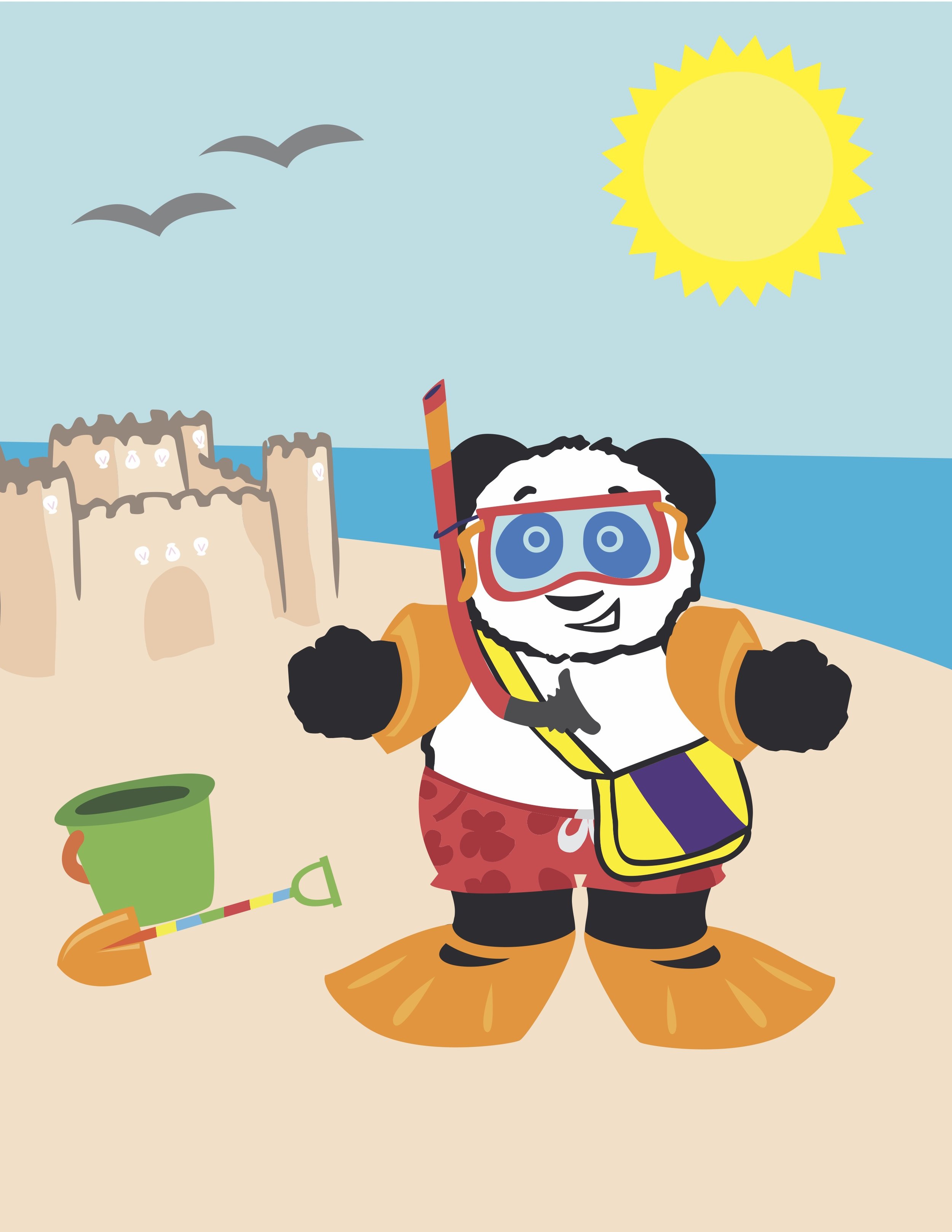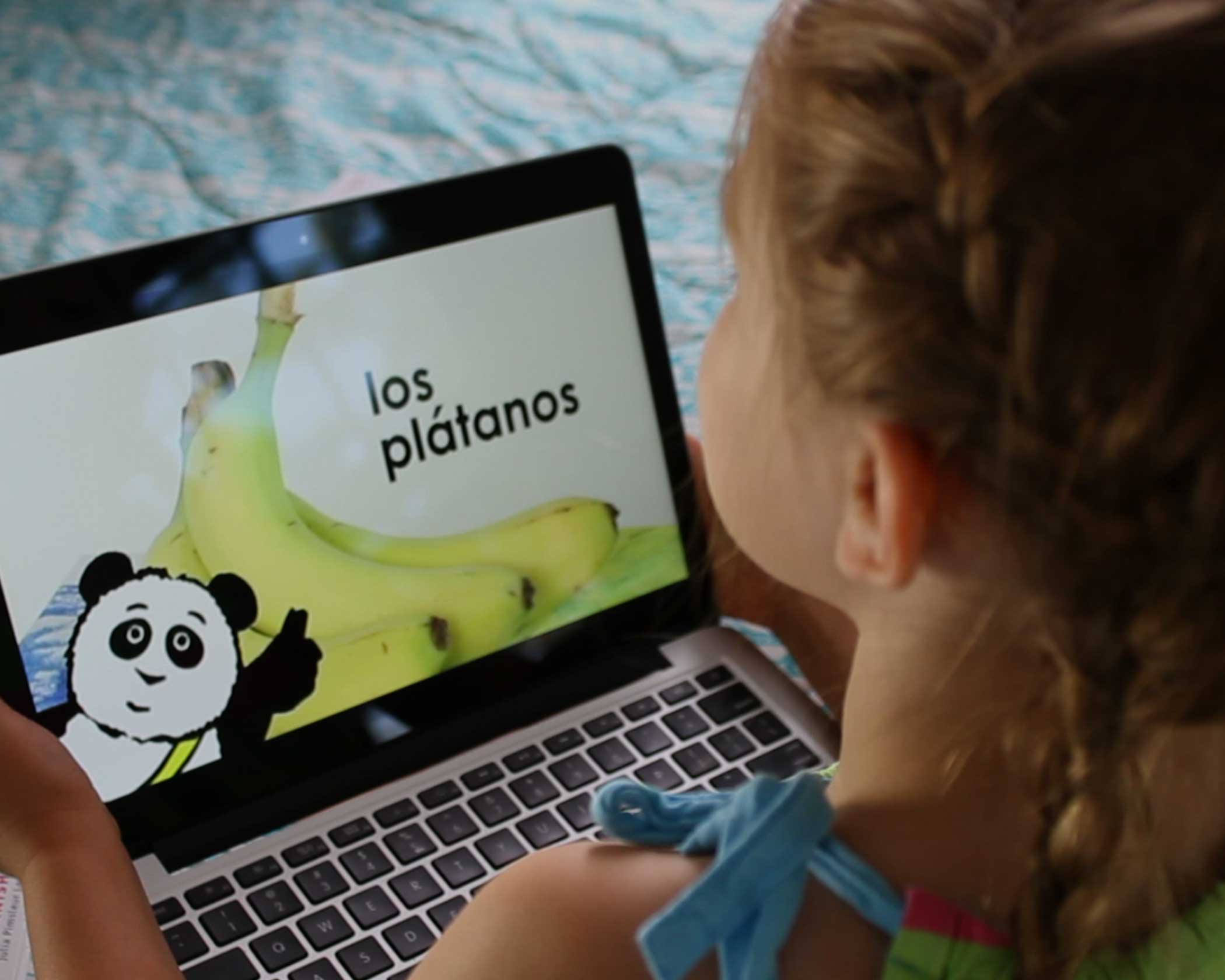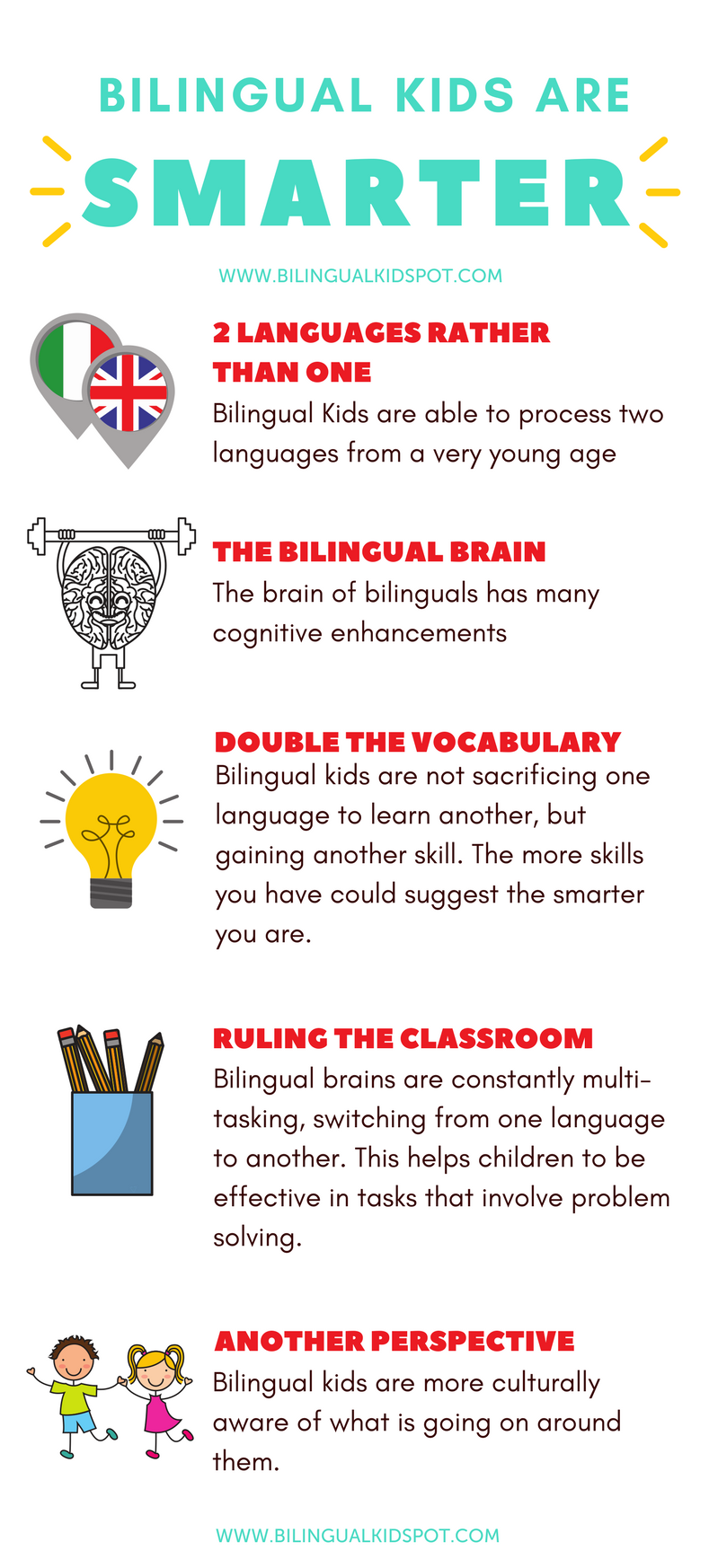
LITTLE PIM BLOG
Benefits of being bilingual
A recent post on psychologytoday.com by Dr. Neel Burton highlights some of the benefits of being bilingual as follows:
Academic Benefits
· Bi- and Multilingualism are associated with improved executive functions (the ability to pay attention and carry out tasks), in addition to memory and cognitive flexibility. It is also clear that the more languages one knows, the easier it becomes to learn additional languages. This is in addition to commonly strengthening vocabulary in the native language.
Economic Benefits
· Employees knowing a second language obtain an average of an additional $3,000 per year compared to their monolingual coworkers. In contrast, nations that are predominantly monolingual can see changes in their Gross Domestic Product of a few percentage points.
Health Benefits
· Multiple studies have shown that those who speak a second language have a decreased incidence of dementia. Another study has shown that those recovering from stroke have improved chance of normal cognition compared to those who are monolingual.
Social Benefits
· Bilingualism is associated with increased ability to see perspectives through an alternative route, associated with improved judgment, and cultural awareness and tolerance.
There are so many benefits to foreign language acquisition. Perhaps another one is the bonding that can occur between parent and child when they practice the language together! Check out the accompanying parent companion guides on LittlePim.com to supplement our language-learning videos, and enjoy the many wonders of learning another language with those you love.
Why learn a second language?
An opinion article by Gretchen Busl, an assistant professor of English at Texas Woman’s University, explores the reasons behind why students should learn a second language in school. Rather than concentrating on an ultimate goal of fluency, which many may not obtain, a more universal reason for foreign language acquisition is to expand one’s horizons, recognizing that there is a bigger world out there than just his or her backyard. While the majority of students may not regularly use their second language later as an adult or in the workplace, there are numerous other traits they acquire. These are traits present even in the first days of language learning.
Introductory language study has been shown to promote attributes including:
· creativity
· critical thinking and problem solving
· communication and ability to participate on a team-level
““To compensate for a limited vocabulary, students must develop their ability to read context clues, to improvise, and to rely on visual communication– vital skills, no matter the language.” – Busl, Is Fluency the Goal of Language Learning?”
These are abilities ultimately needed for any area of employment. Simultaneously, studying foreign language helps others identify and respect both cultural similarities and differences. Busl ends with stating that all students planning to work in a global economy should be obligated to learn a second language, as while studying this, “they understand there is more than one way to see the world - and therefore more than one way to solve a problem.”
In 2011, California became the first state to pass legislation for the Seal of Biliteracy, creating an award in recognition of students who have gained proficiency in two or more languages by high school graduation. At the time of this article, 33 states and Washington DC have approved a statewide Seal of Biliteracy. It is hoped that the rest of the United States continues to follow in these footsteps, providing ongoing encouragement to any student wishing to pursue foreign language study.
Sources:
http://thehill.com/blogs/congress-blog/education/241110-is-fluency-the-goal-of-language-learning: Accessed 09/11/18
https://sealofbiliteracy.org/faq/: Accessed 09/11/18
Photo by Lonely Planet on Unsplash
By Alexis Dallara-Marsh
Traditional Rosh Hashanah Activities for Kids
September 10th is the Jewish New Year, Rosh Hashanah, a day in which Jewish families around the world ring in the year 5779. Whether your child or classroom is learning Hebrew or not, it's a great time to expose them them to Jewish culture and global traditions surrounding this important Jewish holiday.
Rosh Hashanah translates from Hebrew to mean "start of the year." Traditionally, Jewish families attend services in a synagogue and enjoy traditional holiday meals with family on this day and the next.
The central observance of Rosh Hashanah is the sounding of the shofar, the ram's horn, which is sounded on both days of Rosh Hashanah to mark the start of the new year.
For a fun craft, your child can make his or her very own (thankfully less noisy) cardboard shofar here.
Many of the foods Jewish families eat during this holiday are also symbolic. For example, apples dipped into honey help prepare followers for a "sweet" new year.
And Challah, a round loaf of egg bread is also commonly eaten on the first night and symbolizes the circle of life.
Teach your child about this yummy tradition by whipping up a batch of Honey Apple Cupcakes together.
If you want your children to learn more about Jewish tradition and learn Hebrew, check out our award-winning Hebrew for kids program.
Are you celebrating the holiday this year or teaching your child Hebrew? Be sure to send us your pictures or share them on our Facebook page.
And don't forget you can get Rosh Hashanah cards here to wish your Jewish friends or family members a happy new year! The traditional greeting is "shana tova," which translates to "good year."
Back to School Coloring Page for Kids
The unofficial end of Summer has passed and the kids are off to school today. We're getting ready to release our "Back to School" episode to our Little Pim subscribers in Spanish this week! For unlimited access to our 12 language learning programs designed for kids ages 0-6, plus NEW episodes & content when released, subscribe to Little Pim today!
Print out this FREE Little Pim Back to School coloring page for your kids to color in when they get home from their first day.
Little Pim Beach Day Kids Coloring Page
With the heatwave we're experiencing here in the northeast, there's nothing like cooling off at the beach or pool. In this coloring page, Little Pim is at the beach ready to enjoy the hot summer day. When it feels like over 100 degrees outside, cool off indoors in the A/C while your little ones color with Little Pim!
Print your FREE "Little Pim Beach Day" coloring page here or by clicking the image below:
If you're subscribed to Little Pim's new subscription product, in addition to all of our videos, you'll receive new episodes introducing your child to new words and phrases describing the weather, seasons, and greetings. Here's a sneak peek at some of the vocabulary covered in our "Sunny Day" episode in English & Spanish that you can teach your little ones while they're coloring:
summer / el verano
it's sunny / está soleado
beach / la playa
sand / la arena
swimming pool / la piscina
swim / nadar
Stay cool, stay hydrated, and enjoy the last few weeks of Summer! - The Little Pim team
Foreign Language Learning in the U.S. versus Europe
This past week, data from the Pew Research Center highlights the discrepancy between language learning in the United States compared to that in Europe. An average of 92% of the European population is taught a foreign language at a young age, compared to only 20% in America. The reasons for this may be multi-faceted, including:
1. English is frequently spoken throughout the world as compared to most of the European languages.
English is described as the language of globalization. There is not as much pressure for American students to have to learn a foreign language if in many places English is regularly spoken. This is in contrast to other parts of the world, where one can very often expect to be greeted in a different language in a neighboring country. Even within a single European country itself, there may be more than one language as a country's official language. In Europe, it is common to study even more than one foreign language, with this being required in school for at least a year in over 20 European countries.
2. There's no uniform standard for foreign language acquisition in schools in the U.S.
National standards for test-taking in Europe incorporate the importance of foreign language acquisition. On the other hand, no such national standard exists in the U.S., where requirements are generally set at the state or district level. In the United States, the rates of foreign language study vary to as low as single-digit percentiles in some states. Even the higher percentages of states mandating foreign language study lag behind the countries with the lowest percentages in Europe.
3. Timeframe for learning a foreign language in Europe versus the U.S. is generally different.
In Europe, students often begin studying their first foreign language in school between the ages of 6 and 9, in contrast to the United States where foreign language is typically not taught until at least Middle School or High School. Multiple studies have shown that language acquisition is overall easier the younger one is.
Many prominent voices stress the importance of foreign language acquisition. Memoirist Eva Hoffman described loss of multilingualism as "the loss of a living connection". Studies increasingly display the importance of "cultural intelligence" in our increasingly globalized society. As the Livni article summarizes for the importance of learning another language:
“It’s a window on to a new worldview, a way to understand how our fellow humans think.”
As parents, probably one of the greatest gifts we can give our children is the gift of being able to communicate in a second language. Why not give your children a subscription to the #1 learning program for foreign language for kids, Little Pim? Subscription plans are available for a single language as well as the option to access all 12 of our included languages. Experience the wonders of a gift that can last a lifetime.
Sources: Devlin, Kat. Most European students are learning a foreign language in school while Americans lag. Available at: http://www.pewresearch.org/fact-tank/2018/08/06/most-european-students-are-learning-a-foreign-language-in-school-while-americans-lag/: Accessed 08/13/18.
Livni, Ephrat. Only 20% of US kids study a language in school—compared to 92% in Europe. Available at: https://qz.com/1350601/foreign-languages-are-studied-by-just-20-of-kids-in-the-us/: Accessed 08/13/18.
By Alexis Dallara-Marsh
The Benefits of a Bilingual Brain | TED-Ed
It's amazing how today's modern research and brain imaging technology shows how multilingualism actually strengthens the brain. In an article published by Mindshift accompanied by the video below by Lisa LaBracio for Ted-Ed, we learn that people who speak more than one language actually have a higher density of gray matter that contains most of the brains neurons and synapses.
The study also compares the differences between learning a new language as a child vs. adult.
“Children use both hemispheres of the brain to acquire language, which means they often grasp the emotional implications of language more deeply. ”
Scientists hypothesize that adults tend to acquire a new language using their left brain, so they approach problems in a more rational, detached way. The benefits of learning a new language are endless and it's indeed refreshing to be reminded that we are starting our kids out with an advantage by teaching them a new language at a young age. To learn more about this subject, check out the video below:
Summer Camp Coloring Page
Summer is in full swing and the kids are out to play and maybe even going to camp! Download our FREE Little Pim Summer Camp Coloring Page for a fun coloring activity for your kids:
Let's see your kids' creations! Share their coloring page on Instagram/Twitter using #LittlePim or tag us on Facebook and we will send you a FREE Little Pim Panda Plush bear! Offer ends July 31st, 2018. Limited 1 panda plush per household.
Critical Window for Learning a Language [BBC]
In an article BBC shared today, researchers suggest there is a critical cut-off age for learning a language fluently. According to recent studies, research suggests that if you want to have "native-like" knowledge of a language, you should ideally start before the age of 10.
Our research along with plenty of other research on multilingualism also proves that the earlier you start, the better, but that that the cut-off age is 6 when it's easiest for children to learn a new language. This is when our brains are hard-wired to learn 2-3 languages with ease.
In the study, an online grammar test was given to nearly 670,000 people of different ages and nationalities. When the data was analyzed, researchers discovered that grammar-learning was best during childhood, which persists into the teenage years, and then drops off during adulthood. The researchers suggest the drop off during adulthood could be due to the brain becoming less adaptable.
There are many benefits of introducing your children to a new language before the age of 6.
- Bilingual children demonstrate superior reading, writing, social & cognitive skills.
- Learning a new language develops a natural curiosity about world cultures
- Early multilingual exposure benefits emotional health and social development
- New studies indicate that multilingual exposure improves children's social skills
- Bilingual kids score higher in creative thinking and problem solving in many studies
- As children tune their hearing to learn new sounds and words, their listening skills develop
Give your child an extraordinary advantage. Start teaching your kids a second language at the age they learn best which is before the age of six. Watch it pay off over a lifetime! Little Pim is the leading early language learning program for kids ages 0-6. Start watching today for your child's first introduction to a new language!
[Infographic] Are Bilingual Kids Are Smarter Knowing Two Languages?
Infographic shared from our friends at BilingualKidsSpot.
We recently shared this infographic by BilingualKidsSpot on our Facebook page and loved it so much that we thought we'd share it on our website's blog. As parents, aunts, uncles, and more, we’re genuine believers in the importance of learning a foreign language at an early age.
Growing up in a multilingual household, I experienced first-hand the benefits of multilingual exposure at an early age, learning English, Gujarati, and Spanish simultaneously. When I joined the Little Pim team, I quickly grew passionate about educating new parents and early education teachers about the many benefits of raising bilingual and multilingual children.
Our founder, Julia Pimsleur, inspired by her own bilingual childhood, created Little Pim for her children to have the same opportunity to learn a foreign language. Little Pim is the first comprehensive at-home program that can be effectively used by parents and teachers even if they don't speak a foreign language.
We love seeing the benefits of bilingualism shared across the web as it's our mission to spark inspiration, remove obstacles and provide encouragement and support to make learning a second language easy and enjoyable for kids. We hope you're inspired to introduce your child to a new language and if you need help along the way, please feel free to contact us!







![Critical Window for Learning a Language [BBC]](https://images.squarespace-cdn.com/content/v1/5a330a38cf81e0cf09e7ce9d/1525294299472-R0MBHTEL0FQJK8F9FIOR/bilingual-benefits.jpg)


